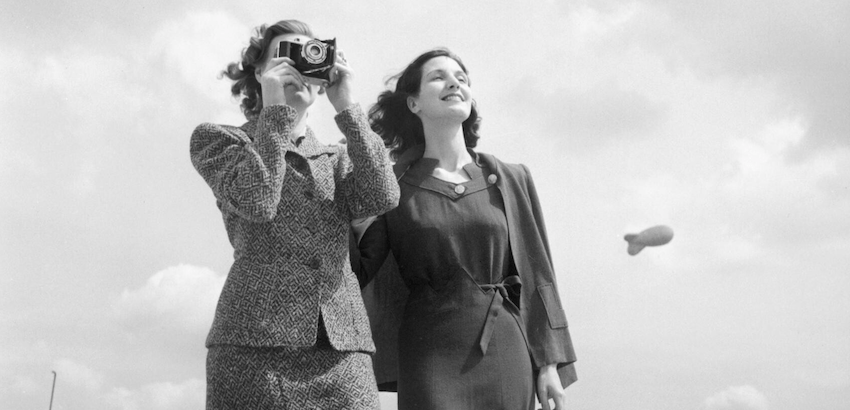‘Make-do and Mend’: lessons from wartime fashion
Only a few weeks ago marked the 75th anniversary of VE day. Street parties and celebrations erupted across the UK in 1945 after some of the most difficult years in our history were finally over. With the global pandemic changing every aspect of our lives, this provides a great opportunity to think about fashion during the war years and its importance for people in their everyday lives. While the 1940s seem a long time ago, there are aspects of 1940s fashion that we could learn from today.
During the Second World War, people were forced to ration clothing and were given coupons to spend on items such as food, fabric and household items. This prevented the purchase of new clothing, even for the wealthiest members of society. Fast fashion did not exist in the way it does today and individuals had a far more limited wardrobe, but rationing encouraged people to be far more practical with their clothing. Old clothing, accessories, and other garments were retrieved from the back of the wardrobe and given a new lease of life.
In 1942, the ‘Make-do and Mend scheme’ was issued in a pamphlet by the British Ministry of Information which gave tips to those staying at home on how to make fashions out of what they already had, encouraging women to be fashionable and innovative when they were limited in what they could purchase.
This ‘Make-do and Mend’ attitude is certainly something that we can learn from today
At a time when environmental sustainability is at the top of many people’s priorities, this ‘Make-do and Mend’ attitude is certainly something that we can learn from today when it comes to sustainable fashion. Upcycling and creating new things from the old is a way that we can all contribute more positively to the environmental impact of fashion. My household has picked this up as a hobby recently by turning old T-shirts and fabric into facemasks for family and friends during the coronavirus pandemic.
If we are able to replicate this, not only will we have some unique items of clothing, but we could minimise our own impact on the environment. The ‘Make-do and Mend’ attitude is a great way to avoid fast-fashion.
Fashion during wartime was not entirely based around sustainability and rationing. It was also about patriotism and comfort, epitomising the classic ‘keep calm and carry on’ attitude.
Fashion and beauty during wartime meant a lot more than just superficiality
The siren suit was designed to be quickly pulled on during an air raid. It was a boiler suit, with long arms and legs, made to be comfortable for people when they had to sit in an air raid shelter for long periods of time. Winston Churchill was famously a fan of the siren suit and had them personally made for him by his tailor.
Many more garments and accessories were designed to promote cheeriness and safety. Glow-in-the-dark buttons were manufactured so that during blackouts pedestrians had enhanced visibility on the roads. The practical, useful nature of fashion has, in many ways, been lost over the years.
For some women, fashion and beauty during wartime meant a lot more than just superficiality and making themselves look pretty. It symbolised solidarity with other women, patriotism, and hope for victory.
Red lipstick was of deep importance to many women at the time
In 1941, Eleanor Roosevelt helped to set up the Women’s Auxiliary Army Corps and Elizabeth Arden was asked to design a lipstick especially for women in the armed services, releasing ‘Montezuma Red’. The bright red shade was an embodiment of hope for the allied forces and strong morale. It became a part of the women’s uniform and was issued to military women in an official kit.
Red lipstick was of deep importance to many women at the time. It was a colour worn by suffragettes at marches, and by glamourous flappers throughout the 1920s. For them, it meant more than just a deep connection with the war effort and their country. It represented a continuing change in the position of women and growing autonomy.
It’s incredibly important to think of fashion as more than simply an accessory. During the wartime, fashion items resembled hope, consolation and determination. It is profound how adaptable people were to the wartime circumstances – many managed to make something impressive from very little. This is an attitude that is truly admirable and would make a considerable difference today.

Comments